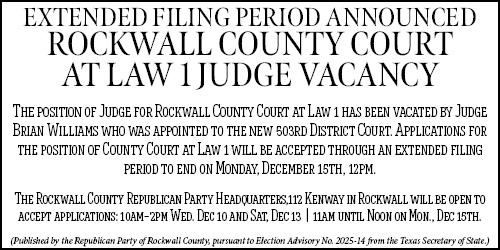(February 27, 2013) Seventeen tornadoes occurred in North Texas, during one afternoon in April 2012. Over 5 million people were under a tornado warning at some point on April 3. There were no fatalities and very few injuries. Trained weather spotters were one of the reasons that effective warnings were given to those in the paths of the dangerous storms. The 2013 severe weather season is fast approaching. Are you ready?
Can you recognize the clues that suggest large hail, flash flooding, or a tornado is possible? Do you want to become part of the severe weather warning system in your county? As part of its area-wide weather preparedness campaign, the National Weather Service Office in Fort Worth will answer these and many other questions at the SKYWARN severe weather program from 11 a.m. to 1 p.m. Saturday, March 9. The program will be held at the public library in Rockwall, and is held in partnership with Rockwall County Emergency Management.
The 2013 program will discuss thunderstorm formation, ingredients, and features associated with severe storms. The presentation will also review tornado formation and behavior, and will give some insight as to why some storms produce tornadoes and some do not. Additionally, we will discuss non-threatening clues which may be mistaken for significant features. Most importantly, we will discuss what you can do to keep you and others safe when thunderstorms threaten. The program will also discuss spotter operations and recommended reporting procedures. The two-hour presentation will be in multimedia format, featuring numerous new pictures of storms, as well as new video from the 2012 severe storm season.
“We have quite a bit of new material for this year’s spotter training program,” said Mark Fox, Warning Coordination Meteorologist at the Fort Worth National Weather Service Office. “We will be showing data from the severe weather events of 2012, plus emphasize how your storm observations help to save lives.”
The fundamental purpose of the spotter training – and of the storm spotter network as a whole – remains unchanged. “Weather Radar is a great tool, but it only tells part of a storm’s story. Spotter observations are fundamental to the protection of life” said Tom Bradshaw, Meteorologist-in-Charge of the Fort Worth Office. “The combination of spotter reports and radar data gives us the best possible picture of the storms and what’s going on inside them.”
The program is free and open to the public. No advanced registration is necessary. “By coming to this program, you will learn a lot about thunderstorms,” Fox said. “Even if you don’t become an active storm spotter, you will learn about how storms work and the visual clues you can identify when storms are in your area. This will better prepare yourself and your family for the threats that storms pose.”
The Rockwall County severe weather program is one of over 60 training sessions that the Fort Worth NWS Office will conduct between January and March 2013. The National Weather Service in Fort Worth provides forecasts, warnings, and weather services for 46 counties in north and north-central Texas.
For more information on severe weather, visit http://www.weather.gov/fortworth, on Facebook: http://www.facebook.com/US.NationalWeatherService.FortWorth.gov and on Twitter: @NWSFortWorth.
 Submitted by Melanie Jensen, Emergency Management Specialist, Rockwall County.
Submitted by Melanie Jensen, Emergency Management Specialist, Rockwall County.
To share your good news and events, email editor@BlueRibbonNews.com.




